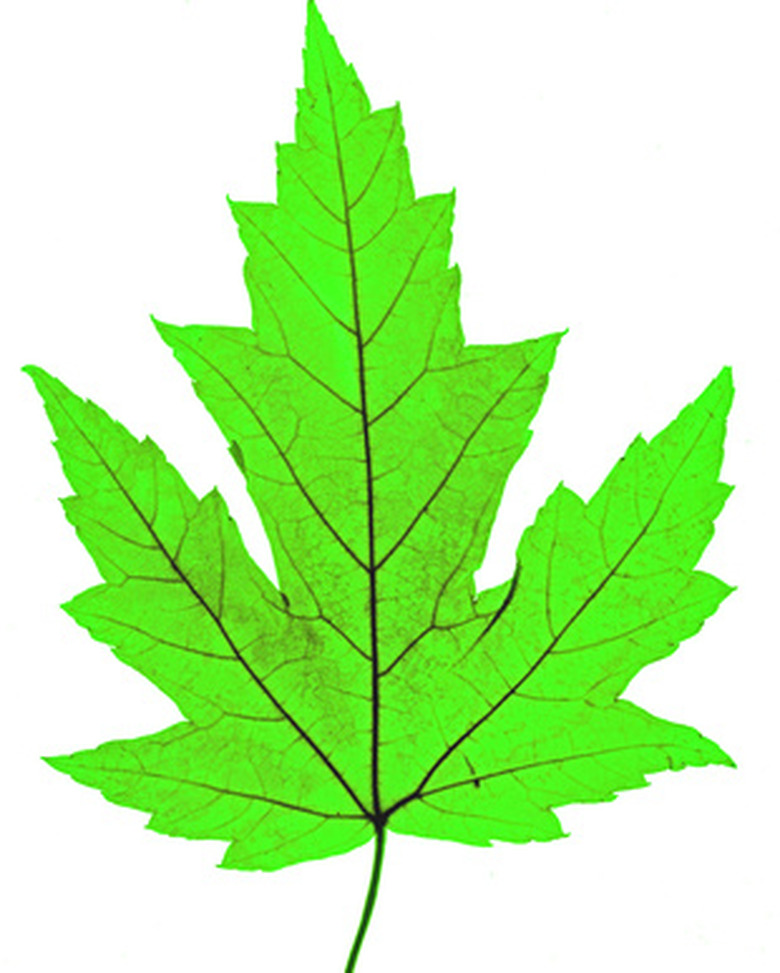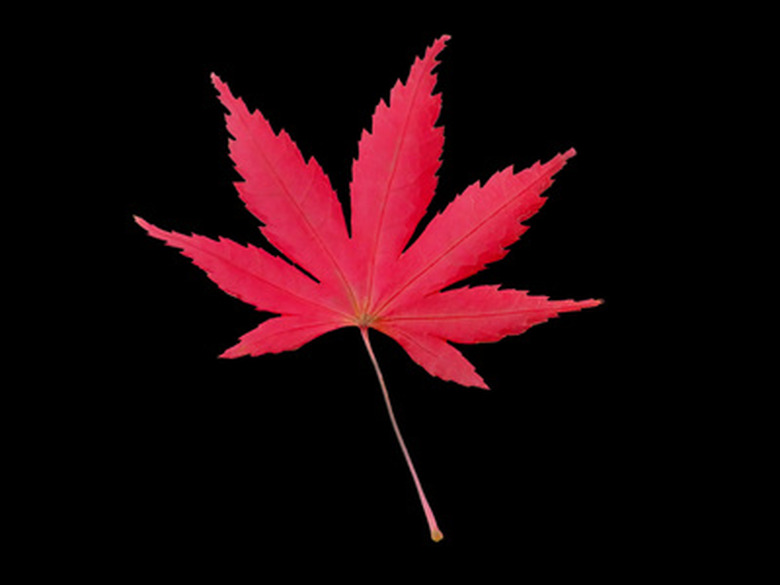Maple Leaf Identification
The form of the maple leaf on the Canadian flag is familiar to most people, but trying to identify all maple tree leaves from that one outline poses problems. Most of the 13 native species of maples in North America do have somewhat similar foliage, but variations in theirs sizes, shapes and colors do occur.
Lobes
Most of the maples on the North American continent have single-bladed leaves that possess a number of lobes. The sugar maple has either three or five lobes, the silver maple always has five, and the red maple and chalk maple foliage may have three or five lobes. Most lobed maple leaves have a palmate shape, meaning they look like a hand with the fingers spread apart, their lobes representing fingers.
Indentations
The depth of lobe indentation on maple leaves can aid in recognizing individual species. The "National Audubon Society Field Guide to Trees" ascertains that the silver maple has deeply indented lobes. The leaves of mountain maple and striped maple typically have three lobes, but they do not have deep indentations along the lobes, so they resemble the shape of a duck's webbed foot.
- The form of the maple leaf on the Canadian flag is familiar to most people, but trying to identify all maple tree leaves from that one outline poses problems.
- The leaves of mountain maple and striped maple typically have three lobes, but they do not have deep indentations along the lobes, so they resemble the shape of a duck's webbed foot.
Size
Size is an important consideration when identifying maple leaves. Some, such as the Florida maple, have a small diameter, in the 2- to 3-inch range. Others, including silver maple, stretch some 6 or 7 inches across from side to side. The leaf of a bigleaf maple lives up to the tree's name, possessing in some instances a width of 1 foot.
Exceptions
Some maples have leaves that do not own the typical look associated with the species. One is the boxelder, a type of maple with compound leaves—multiple leaflets growing on one stem to form one leaf. Boxelders have a long stem with three to seven shallowly lobed smaller leaflets attached. The vine maple is another maple with an odd-shaped leaf, featuring from seven to nine pointy lobes arranged in a formation that resembles a fan.
- Size is an important consideration when identifying maple leaves.
- One is the boxelder, a type of maple with compound leaves—multiple leaflets growing on one stem to form one leaf.
Colors
Maples have a reputation for providing striking autumn colors, but their spring and summer colors in some cases identify them. The vine maple usually has hints of red to go with the predominant green color of the leaf. The silver maple has a dull green shade on its upper side, but the underneath of the leaf takes on a silver-white hue. Red maple has a paler, almost whitish shade of green on its undersides as opposed to the dull green above.
References
- Ohio Department of Natural Resources: Ohio Trees Index
- "National Audubon Society Field Guide to Trees"; Elbert Little; 2008
- "Trees of North America"; C. Frank Brockman; 1996

